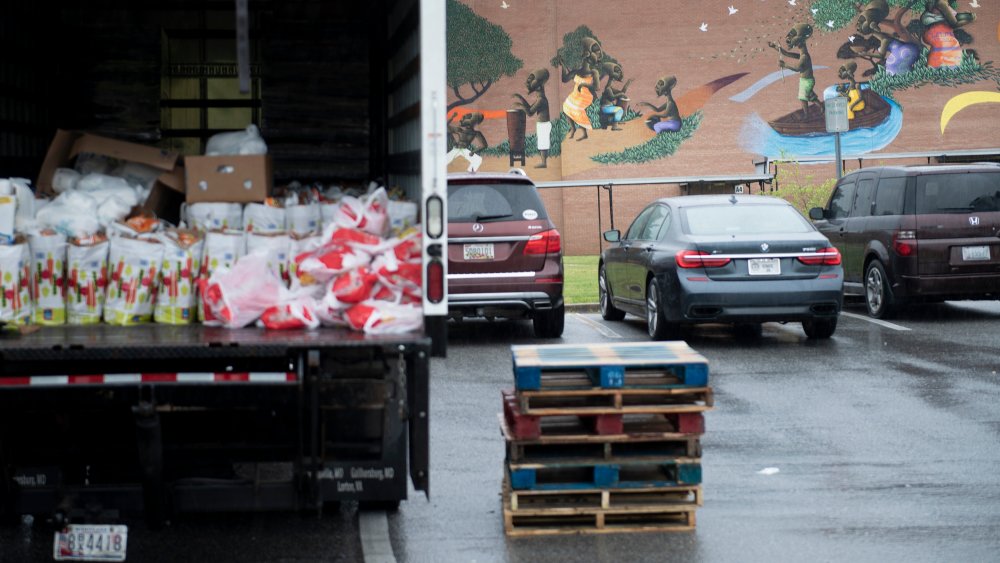Why Eating At Home Is More Expensive Than Ever
You've dusted off your cookbooks and your cooking skills are now the best they have ever been in your entire adult life. You've even honed your bread-making skills. And just when you think you could get used to eating at home, a U.S. government report is telling us that our food budgets just aren't going as far these days, as prices at our local grocery stores are going up — way up — as of late.
According to the monthly consumer report released by the Bureau of Labor Statistics, Americans paid more for their groceries in April than they did in March: 2.6 percent more, in fact; and that percentage increase is the largest that consumers have seen since February 1974 (via Food Navigator). Prices for meat, poultry, fish, and eggs jumped by 4.3 percent, with the price of eggs alone skyrocketing by a whopping 16.1 percent in April. The price of cereal and baked goods also rose 2.9 percent — the Bureau of Labor called that price jump the highest monthly increase for that category, ever; and the price of dairy, fruits, and vegetables also rose by 1.5 percent in April.
In contrast, the index for "food away from home" (restaurant takeouts) went up by just 0.1 percent in April, after going up 0.2 percent in March.
Food prices are falling around the world
The 2.6 percent jump for the food-at-home index stands out because the prices of food and essentials like gas, clothing, and other consumer goods have fallen globally over decreased demand caused by the pandemic (gas prices fell by nearly 21 percent in April). The United Nations' FAO (Food and Agriculture Organization) Food Price Index, which follows the prices of food commodities like sugar and cereals, was down 3.4 percent in April, while the FAO Dairy Price Index declined 3.6 percent because of diminished demand for butter and milk powder prices.
Thrillist reports that America's food prices likely rose because a surge in the demand for groceries is happening alongside factory shutdowns and supply chain problems linked to the pandemic. Supermarket chains like Costco have even put limits on the amount of meat you can buy, and they're not the only stores doing this.
But even if the supply chain problems correct themselves eventually, this is a bad time for prices to rise the way they have. Thanks to work stoppages across all sectors, the country's unemployment rate is at 14.7 percent as of May 8; The New York Times says this is the worst it's been since the Great Depression of the 20th century.
As Michelle Meyer, head of U.S. economics at Bank of America tells The New York Times: "What would typically take months or quarters to play out in a recession happened in a matter of weeks this time."

